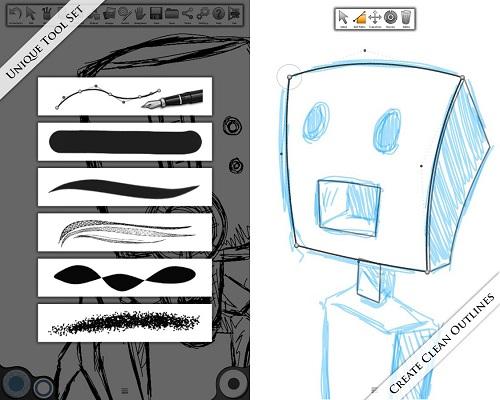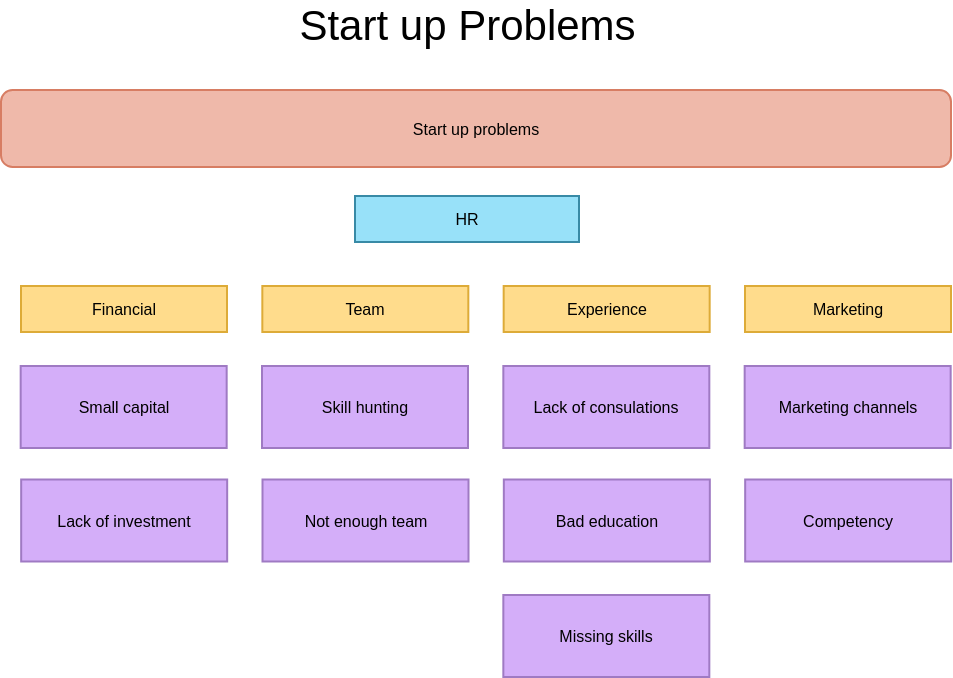
Successful businesses need UI/UX design. They design innovative products and services that are user-friendly. These solutions are developed using a process that is constantly improving. Before a project can proceed, designers need to fully understand users' expectations and needs.
You must first understand the fundamental design principles to become a UI/UX Designer. This will help you design your product's flow and layout. Also, it is important to get familiarity with the various tools and technologies involved in product design.

UX books or podcasts are also available to prepare you for your new career. Top universities offer UX Design programs online. A mix of formal and informal learning is a good option to start. Online programs also allow students to work from home while earning their degree.
While you're learning, you should also begin to build a portfolio. Portfolios will show potential employers and recruiters your abilities. You should include examples of the work you are interested. The more projects you are familiar with, the better.
If you're looking to build a portfolio for a career in UI/UX designing, it is important to do so. A good portfolio will showcase your expertise and show prospective employers your commitment to your career. However, a portfolio is only one component of a successful career in UX. The networking you do is another component of a successful career in UX. There are many opportunities to network. These include attending events or connecting with other designers.
Networking is a great method to meet others who are interested and motivated by a career in UX. Get to know your fellow designers. This will give you motivation, collaboration, joy, and even fun. A professional network can also help you get hired.

When preparing for your first job in the field, you should learn how to conduct user research and translate that research into a product design. You should also learn how to use the design sprint method to identify problem spaces and develop solutions.
Practicing your design skills is the best way to build a strong foundation for a new career. You will be given the opportunity to participate in many UX design projects throughout your training. You should choose those that allow you to use a variety of UI design elements including responsive designs.
It's important to establish a network of industry mentors, friends, and supporters. To meet other designers and exchange ideas, you can either use the Internet resources or join groups such as the UI/UX Collective. A networking group can be fun, even if you're not looking for work.
Online training and vocational courses are also available. These programs will help you to develop hard skills. A certificate in graphic design, for instance, is available. You will be taught the basics of design, industry-standard design tools and typography during the program. Furthermore, you will develop low-fidelity applications and a pattern database.
FAQ
What is a responsive web design?
Responsive Web Design, also known as RWD, is a way of designing websites so that content displays on all devices. This includes desktop computers, tablets (tablets), smartphones, etc. This allows users the ability to view a website simultaneously on different devices and still have access to other features like navigation menus, buttons, and so forth. RWD is designed to ensure that a user can view a site on any size screen.
A website that sells primarily through eCommerce would be an example of this. You want your customers to be able to purchase products from your store, even if they are viewing it on a phone.
A responsive site will adapt to the device used to view it. So, viewing the site on your laptop will look like a standard desktop website. But, the page will appear differently if you view it on your phone.
This allows you to create one website that works on all devices.
Are you a technical person who wants to design and build a site?
No. All you need is an understanding of HTML and CSS. You can find tutorials online for HTML and CSS.
Are I more likely to be hired for a job as a Web Developer if my portfolio is good?
Yes. When you are applying for a job as a web developer or designer, a portfolio is crucial. The portfolio must show examples of your skills and experience.
Portfolios are usually made up of examples of past projects. These examples can showcase your abilities. Portfolios should contain everything, from wireframes, mockups, logos and brochures to websites, apps, and websites.
Where can you find freelance web developers?
There are many places where you can find web developers and freelance web designers. These are some of the best choices:
Freelance Jobs
These sites offer job postings for freelance professionals. Some have very specific requirements, while others don't care what type of work you do.
Elance, for example, offers high-quality jobs as programmers, graphic designers, translators and editors, project managers and many other positions.
oDesk has similar features, but they focus on software development. They offer positions in PHP and Java, JavaScripts, Ruby, C++, Python, JavaScripts, Ruby, iOS, Android, as well as.NET developers.
Another option is oWOW. Their site is focused on web designers and graphic artists. They also offer video editing, writing, programming, SEO, social media marketing, and many other services.
Forums Online
Many forums allow members of the community to post jobs or advertise their services. DeviantArt is an example of a forum that's dedicated to web developers. If you search "web developer" in the search bar, you will see a list of threads where people are looking for someone to help them with their websites.
Statistics
- Did you know videos can boost organic search traffic to your website by 157%? (wix.com)
- Is your web design optimized for mobile? Over 50% of internet users browse websites using a mobile device. (wix.com)
- At this point, it's important to note that just because a web trend is current, it doesn't mean it's necessarily right for you.48% of people cite design as the most important factor of a website, (websitebuilderexpert.com)
- It enables you to sell your music directly on your website and keep 100% of the profits. (wix.com)
- The average website user will read about 20% of the text on any given page, so it's crucial to entice them with an appropriate vibe. (websitebuilderexpert.com)
External Links
How To
How do I get started as a UI Designer?
There are two paths to becoming a UI design:
-
You can also go to school and get a degree as UI Design.
-
You can start freelance.
To go to school, you will need to enroll in college or university for four years. This includes computer science, psychology, business, and art.
You can also take classes at community colleges or state universities. Some schools offer no tuition, while some charge tuition.
You'll need to find work once you have graduated. If you choose to work for yourself, you must build your client base. It is vital to build a network of professionals so they are aware that you exist.
You can also look for opportunities to intern at companies that specialize in developing web applications. Many companies hire interns before they hire full-time staff.
It will be easier to land more jobs once you have a portfolio of your work. Your work samples, as well details of the projects, should all be part of your portfolio.
It's a great idea to email your portfolio to potential employers.
You will need to market your services as a freelancer. You can advertise your services on job boards like Indeed, Freelance, Guru, or Upwork.
Freelancers are often assigned by recruiters posting job openings online. These recruiters search for qualified candidates to fill positions within specific industries.
These recruiters will typically give the candidate a project brief that outlines the position's requirements.
You are not required to sign long-term contracts as a freelancer. You should negotiate an upfront payment if your goal is to move forward.
Many designers prefer to work directly with clients rather than through agencies. While this may seem ideal, many people lack the necessary skills.
Agency workers typically have extensive knowledge of the industry they're working in. They also have access special training and resources that help them produce high-quality work.
In addition to these benefits, agency workers usually receive a higher hourly rate.
You won't be able to get in touch with your employer directly if you work with an agency.
A UI designer must be self-motivated, creative and flexible.
Additionally, communication skills must be excellent both in written and verbal.
UI designers are responsible for designing websites by creating user interfaces (UI) and visual elements.
They are also responsible to ensure the site meets user needs.
This involves understanding the information users need and how to make your site work.
Wireframes can also be created by UI developers using a variety o tools. They use wireframing to help them visualize the layout of a webpage before they start designing.
Wireframe templates are available online, making it easy for anyone to create their own wireframes.
Some designers concentrate on UI design only, while others mix UI design with graphics design.
Photoshop is a popular software used by graphic designers for editing images.
Then, they use Adobe InDesign for layout and page design.
Photographers capture images using digital cameras or DSLRs.
They then upload the pictures to a photo editing program where they add text captions, filters, and other effects.
After taking the photo, the photographer saves it in a file format that is compatible with the website.
When building a website, it is essential to consider all aspects of the design process.
This includes research and planning, wireframing, prototyping testing, coding, content creation and publishing.
Research – Before starting any new project, it is important to conduct extensive research.
Planning - Once you've completed your research, you'll want to begin developing a plan.
Wireframing: A wireframe is a sketch of a website or application.
Prototyping - Prototypes help ensure that the final product matches the initial vision.
Testing – The prototype should go through multiple rounds to be tested in order for it to work properly.
Coding – Coding is the art of writing computer codes.
Content Creation – Content creation includes everything, from the writing of copy to managing social networks accounts.
Publishing is the act of uploading files and making sure that the site can be accessed.
You will learn about various projects as a freelance UX/UI designer.
Some companies, for example, only need wire frames. Others require complete prototypes.
You might be required to do certain tasks, depending on what type of project it is.
For instance, if your job is to create wireframes you might have to make several over the course of time.
If you're hired to create a complete prototype, you may be required to develop a fully functional version of the site.
No matter what type of project you are working on, it is important to have good interpersonal skills.
Since most clients hire freelancers based on referrals, you must build solid relationships with potential employers.
You must also be able communicate clearly both verbally as well as in writing.
Portfolios are an essential part of any freelancer’s toolbox.
It showcases the quality of your work as well as your ability and willingness to provide high-quality results.
This is possible by creating an online portfolio.
The best way to get started is to find websites similar to yours.
Next, search these sites to discover which site offers what services.
After identifying the best practices that you believe to be most successful, you can go ahead and implement them.
It is also a good idea to include links in your resume to your portfolio.